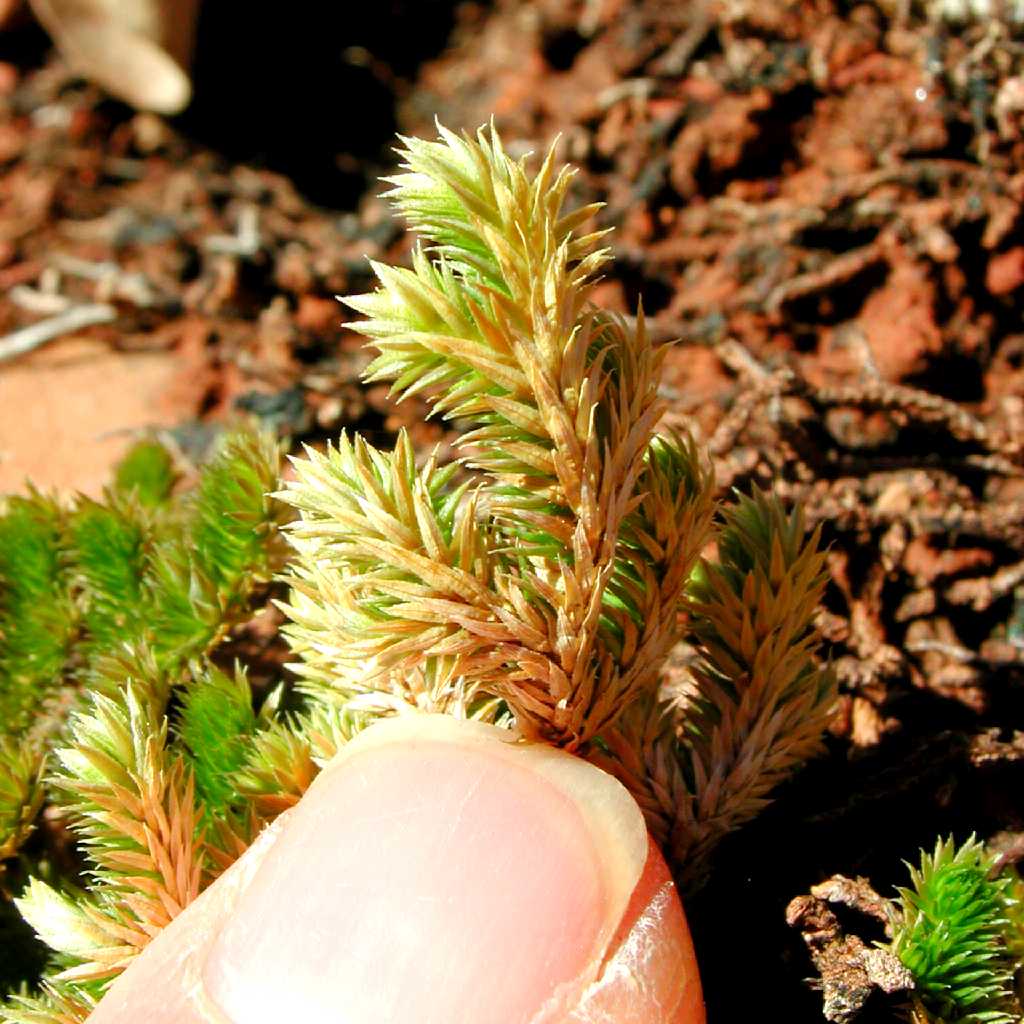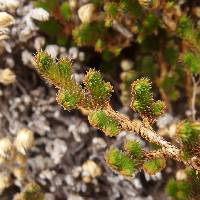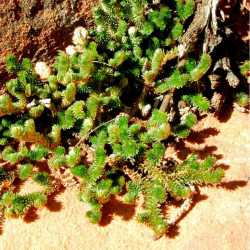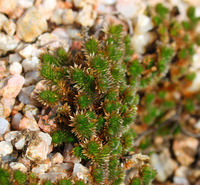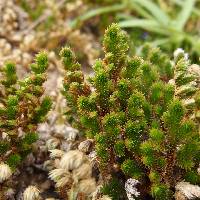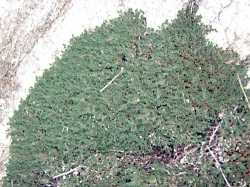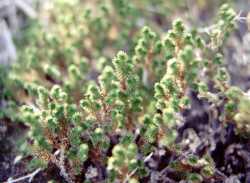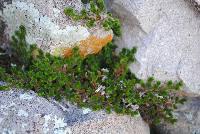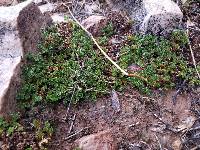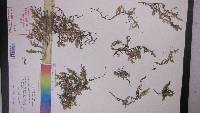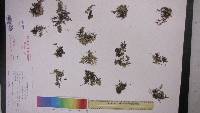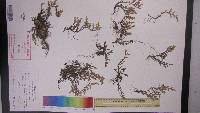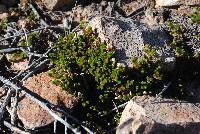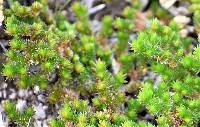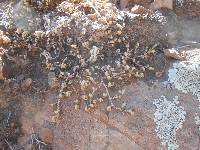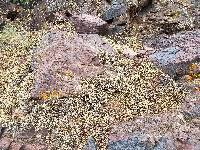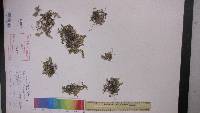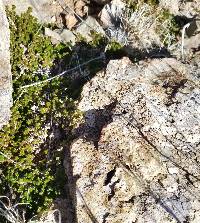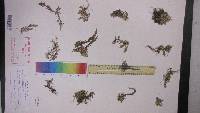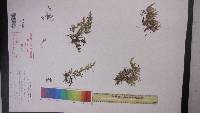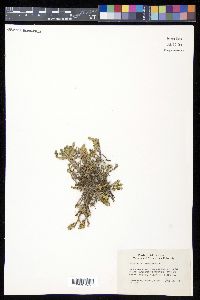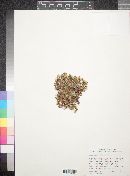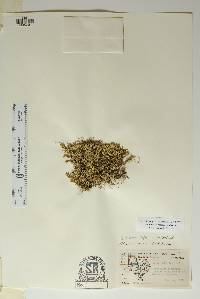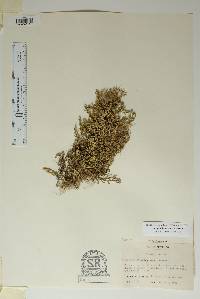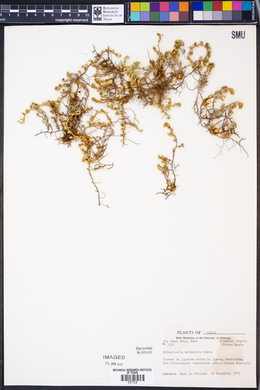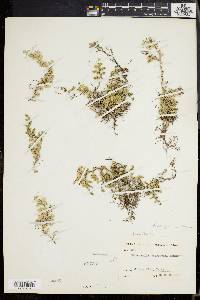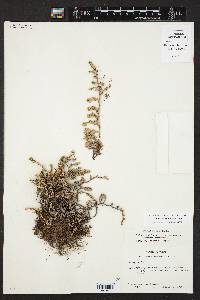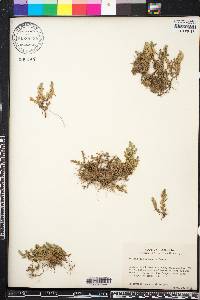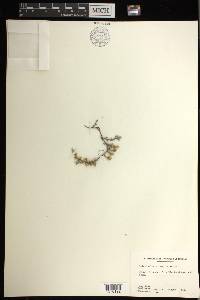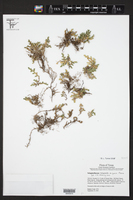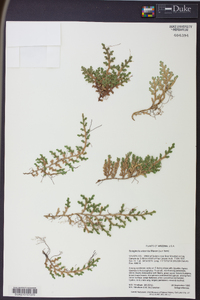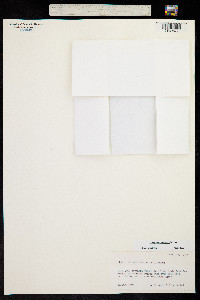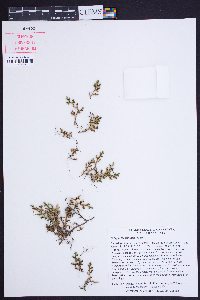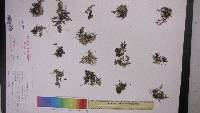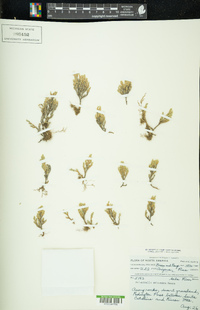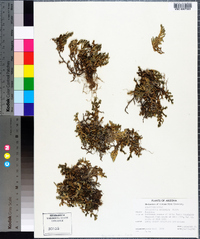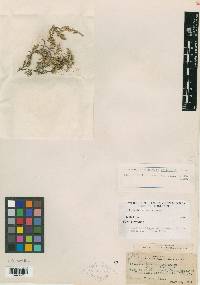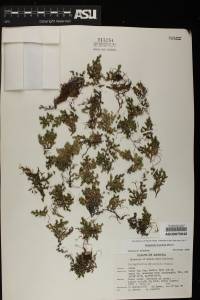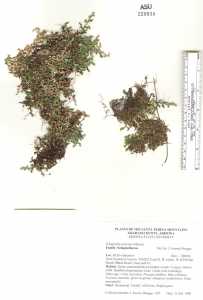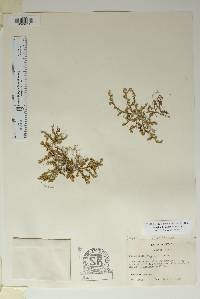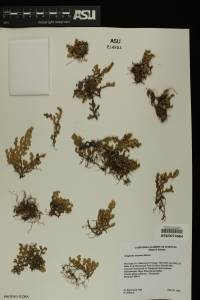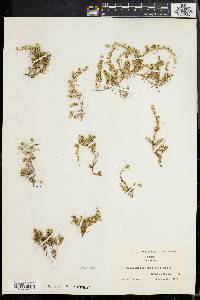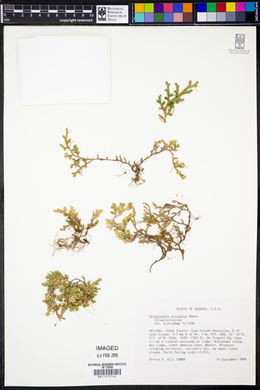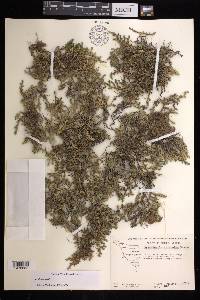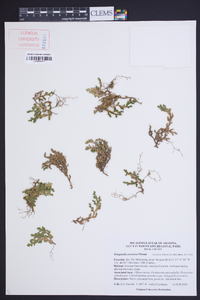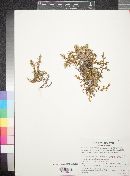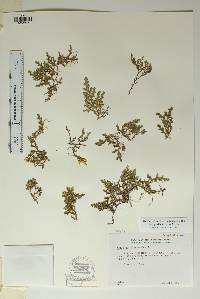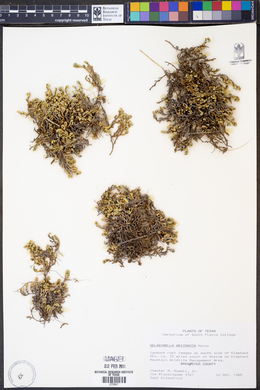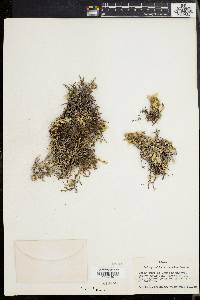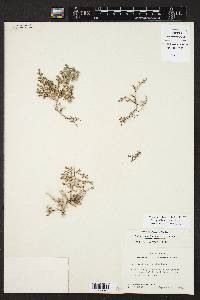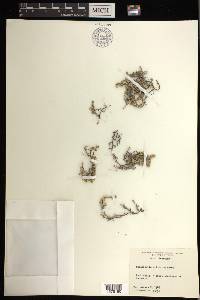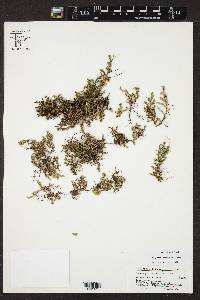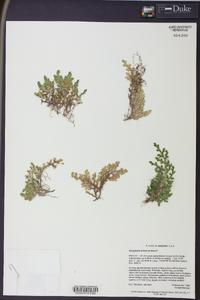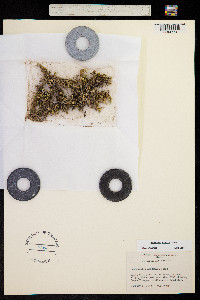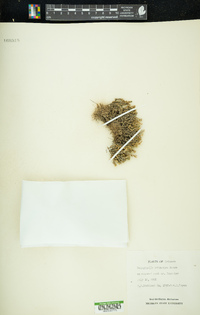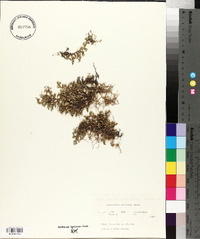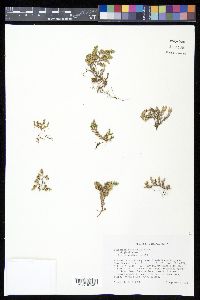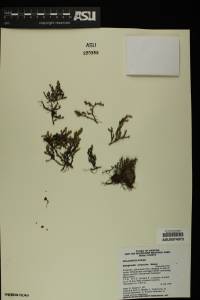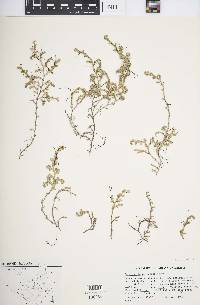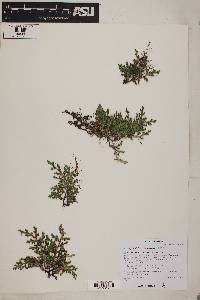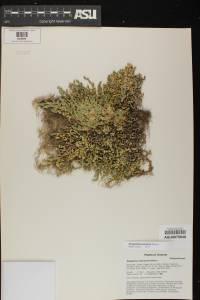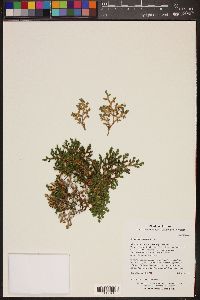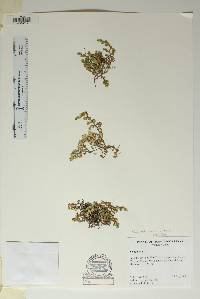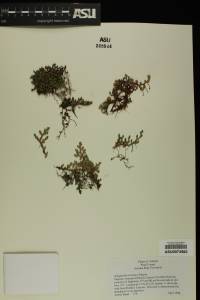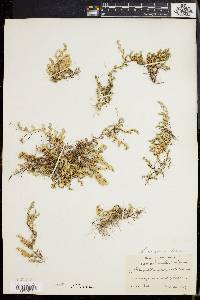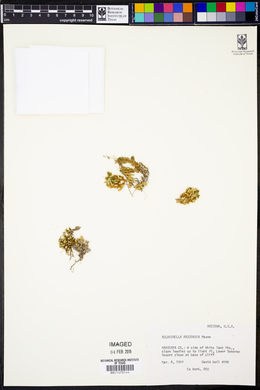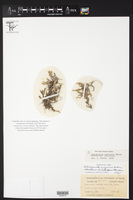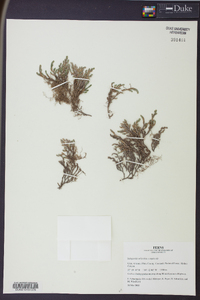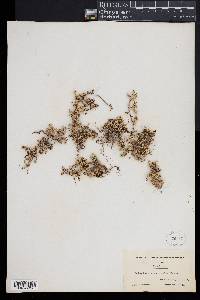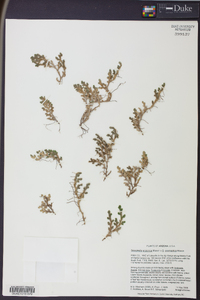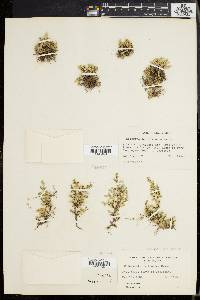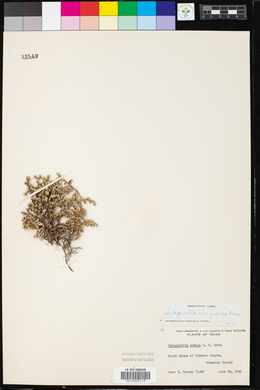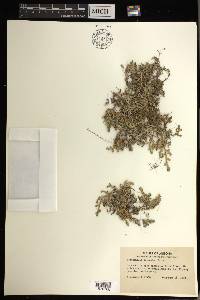
|
|
|
|
Family: Selaginellaceae
Arizona Spike-Moss, more...Arizona spikemoss, spike moss, Arizona clubmoss (es: siempreviva)
|
Plants on rock or terrestrial, forming rather loose mats. Stems not readily fragmenting, prostrate, upperside and underside structurally different, irregularly forked, branches determinate, tips upturned in extremely dry conditions. Rhizophores borne on upperside of stem throughout, 0.25--0.3 mm diam. Leaves conspicuously dimorphic, in 8 ranks, tightly appressed to ascending, green; abaxial ridges present; apex with transparent to opaque, flattened bristle 0.1--0.3 mm, sometimes becoming acute (by breaking off of bristle). Underside leaves lanceolate, 2--2.5 X 0.5--0.6 mm; base decurrent, glabrous; margins ciliate, cilia transparent to opaque, spreading or ascending, 0.06--0.13 mm. Upperside leaves linear-lanceolate to slightly falcate (on marginal ranks), 1.9--2.25 X 0.4--0.55 mm; base abruptly adnate, pubescent or glabrous; margins ciliate, cilia transparent to opaque, spreading, 0.06--0.15 mm. Strobili solitary, 5--10 mm; sporophylls ovate-deltate, abaxial ridges not prominent, base glabrous, margins short-ciliate to denticulate, apex acute. In rock crevices or on gravel, on sandstone, igneous, or rarely limestone substrates; 600--2000 m; Ariz., Tex.; Mexico in Baja California, Sonora. Selaginella arizonica can be further distinguished from the similar S . peruviana by its broad, thin underside leaves. In S . peruviana the underside leaves are narrow and fleshy.
STEMS: monomorphic, not readily fragmenting when dry, the branch tips appearing more or less curled when dry, prostrate, usually forming small loose low mats. RHIZOPHORES: produced throughout. LEAVES: relatively strongly dimorphic, the tip sharply pointed, with a stiff straight white glabrous seta 0.1-0.3 mm long (theis sometimes breaking off with age), the margins ciliate; those of the adaxial stem side 1.9-2.3 mm long, narrowly lanceolate, green to yellowish green when hydrated, the base abruptly adnate (differing in color from the stem); those of the abaxial stem surface 2.0-2.5 mm long, lanceolate to narrowly lanceolate, persistently gray to brown, the base decurrent (similar in color to the stem). STROBILI: 4-10 mm long, the sporophylls ovate-deltate, narrowed to an acute tip lacking a seta, the margins denticulate to short-ciliate. MEGASPORES: finely and often faintly rugose-reticulate, orange or yellow. NOTES: Rock ledges, cliffs, and open gravelly to rocky areas, usually on igneous or volcanic substrates or on sandstone: Gila, Graham, Maricopa, Pima, Pinal, Yavapai cos. (Fig. 1A); 600-1700 m (2000-5600 ft); AZ, TX; nw Mex. The taxonomy of S. arizonica is still not fully understood. In the desert mountains of western Pima County uncommon apparent hybrids occur between S. arizonica and the closely related S. eremophila. Some of these putative hybrids are sterile with abortive spores, but other plants intermediate for one or more morphological traits produce apparently well-formed spores that are slightly larger than those of either of the parents. These may represent an allopolyploid that should be recognized taxonomically. Where S. arizonica co-occurs with the morphologically distinctive S. rupincola, occasional putative hybrids also are encountered with intermediate morphology and abortive spores. REFERENCES: Yatskievych, G. and M. D. Windham. 2009. Vascular Plants of Arizona: Selaginellaceae. CANOTIA 5 (1): 39-48. General: Prostrate, freely branching, matted plant with creeping stems 5-20 cm long, ultimate branches short, their tips turning upward slightly. Leaves: Arranged dorsiventrally in about 6 ranks, bright green when young, grayish in age; dorsal leaves smaller than ventral ones, closely imbricated, subulate, 1.8-2.2 mm long, with 4-8 cilia on each side, terminal seta milk-white, 0.1-0.3 mm long, ventral leaves linear-lanceolate, cilia on each side. Sporangia: Strobili ascending, 2-6 mm long, sporophylls narrowly ovate, 1.5-2 mm long, subcarinate, short-setigerous, with 18-22 cilia on each side, megasporangia pale yellow. Ecology: Found on rocky hillsides and among rocks, along rocky ledges and cliffs from 2,000-4,500 ft (610-1372 m). Notes: This species can be distinguished by its being strongly dorsiventral, with both an upper and lower surface. Etymology: Selaginella is a diminutive of Selago, the name of another similar plant, while arizonica means of or from Arizona. Sources: Wiggins 1964, Kearney and Peebles 1969, FNA 1993 Wiggins 1964, Kearney and Peebles 1969, FNA 1993 Common Name: Arizona spikemoss General: Prostrate, freely branching, matted plant with creeping stems 5-20 cm long, ultimate branches short, their tips turning upward slightly. Leaves: Arranged dorsiventrally in about 6 ranks, bright green when young, grayish in age; dorsal leaves smaller than ventral ones, closely imbricated, subulate, 1.8-2.2 mm long, with 4-8 cilia on each side, terminal seta milk-white, 0.1-0.3 mm long, ventral leaves linear-lanceolate, cilia on each side. Sporangia: Strobili ascending, 2-6 mm long, sporophylls narrowly ovate, 1.5-2 mm long, subcarinate, short-setigerous, with 18-22 cilia on each side, megasporangia pale yellow. Ecology: Found on rocky hillsides and among rocks, along rocky ledges and cliffs from 2,000-4,500 ft (610-1372 m). Notes: This species can be distinguished by its being strongly dorsiventral, with both and upper and lower surface. Ethnobotany: Unknown, but other species in this genera have a variety of uses. Etymology: Selaginella is a diminutive of Selago, the name of another similar plant, while arizonica means of or from Arizona. Synonyms: None Editor: SBuckley, 2010 |
|
|
|
This project was made possible in part by the Institute of Museum and Library Services [MG-70-19-0057-19].
Powered by Symbiota

